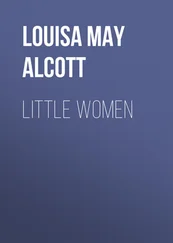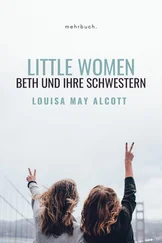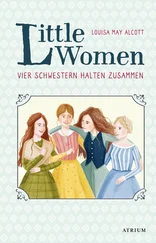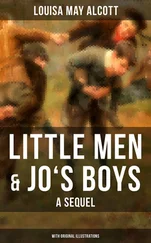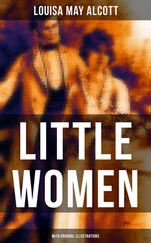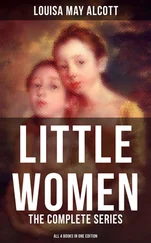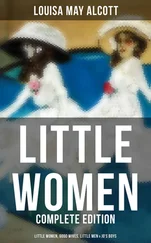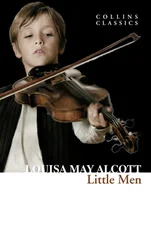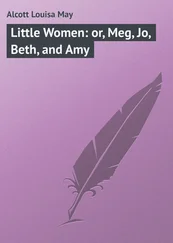In remarking that Little Women has been an incredibly popular text, a commentator risks making a gigantic understatement. Part one of the novel, released on September 30, 1868, sold out its first print run in four weeks (at $1.25 a book—some sources note that the price was jacked up to $1.50 after the book’s ability to sell had been proved), though its generally positive early reviews had not yet labeled the story a must-read. Part two, released on April 14, 1869, also sold out quickly, even with the dramatic increase in its initial print run. In 1932, a few years after the novel went into the public domain (meaning that any publishing firm could print it), its long-authorized publisher, Boston’s Little, Brown and Company, reported having sold a total of more than 1,500,000 copies since 1898—thirty years after the book was first published. Little Women was also an international phenomenon. Publishers’ Weekly noted in 1929 that, in addition to its longstanding popularity in England, Little Women had been translated into French, German, Dutch, Greek, and Chinese (it was a favored Chinese New Year gift). By 1969, one hundred years after the publication of the full text, the list of translations included Arabic, Bengali, Indonesian, Irish, Japanese, Russian, Swedish, and Urdu. On a more personal level, by the end of 1869 Louisa May Alcott had attained clear celebrity status at age thirty-six; her widespread fame far surpassed that of her well-known philosopher father, Amos Bronson Alcott (just as the first part of Little Women had far outsold his own 1868 offering, an essay collection called Tablets).
Prior to Little Women, Alcott had written primarily for adults, with the exception of Flower Fables, an 1854 collection of children’s fairy stories (Alcott also edited a monthly children’s periodical, Merry’s Museum). In 1863 she had begun publishing sensational Gothic-style stories in newspapers and magazines, anonymously or under a pseudonym, mainly to earn the ready money that these popular narratives commanded. Her serious novel Moods (1864) had met with neither critical esteem nor commercial notice; but the success of Little Women turned its author into a revered, wealthy children’s book writer. The book’s popularity would seem to have been nearly ordained when one considers the circumstances of its birth and its contractual engineering. Both its publisher and its author envisioned Little Women primarily (if hopefully) as a moneymaking venture. The original publisher, Thomas Niles of Roberts Brothers, had to persuade Alcott to write a tale for girls to compete with a new type of boys’ book by prolific novelists such as Horatio Alger (Ragged Dick) and Oliver Optic (Poor and Proud), which were in wide demand. Novels like these introduced a genre of children’s fiction written as entertainment, not mainly for moral instruction—a somewhat controversial innovation at the time. Alcott resisted the idea of writing a girls’ book; she doubted both her interest in a project for a young female audience and her ability to write it effectively. She claimed that she didn’t know how to accomplish the task: She wasn’t even especially concerned with the lives of girls outside her own household of four sisters. As a way to overcome her reservations, Alcott would eventually mine her own family’s experiences as the basis for Little Women’s March sisters, their characterizations, and many of their pastimes, conflicts, and daily duties. Alcott finally convinced herself that “lively, simple books are very much needed for girls, and perhaps I can supply the need.”
The promise of earning more money to assist her financially struggling family also helped Alcott to agree to the project. Niles offered her royalties (a percentage of future sales) rather than a simple flat author’s fee paid upon acceptance of the manuscript. This was a fantastic deal: In Little Women novice writer Jo March is thrilled to be paid $300 for her first novel; although Alcott, as a better-known writer, would have received a larger flat fee than this, her royalties plan would earn her $8,500 by the end of 1869 alone. Despite Alcott’s and Niles’s initial fears that the novel’s opening chapters were too dull, and thus wouldn’t sell the book well, the first part of her fictional experiment—detailing the homey adventures through which the four New England March sisters begin to mature during one year of the American Civil War—was an immediate, unqualified best-seller.
All these numbers, statistics, and editions clearly indicate that Little Women has universal appeal. One strong reason is the story’s essentially domestic, apolitical nature. After determining that her inclusion of too many controversial ideas about marriage had hurt sales of Moods, Alcott decided to make her girls’ book idea-free: “My next book shall have no ideas in it, only facts, and the people shall be as ordinary as possible.” Most readers would agree that Alcott doesn’t necessarily hold to such a strict scheme—she repeatedly reinforces her moral ideas about self-sacrifice and altruism—but overall the novel does place plot considerations above politics, cultural or otherwise. For example, Little Women is set during the Civil War, but Alcott declines to comment on this potentially polarizing topic, even though she had disturbing firsthand experience of its effects as a nurse in Washington, D.C. (she had previously published her wartime observations and opinions in Hospital Sketches, written for adults and published in 1863). Her grueling, gruesome nursing duties left Alcott sickened and exhausted, and she was forced to return home after spending only six weeks tending the injured and dying soldiers. Although Mr. March in Little Women ministers to Union troops, the novel includes very little commentary on his experiences in doing so, or even on the causes or goals of the war. Alcott instead substitutes general praise for the soldiers and demonstrates the supportive sewing and knitting work that women like the Marches performed on the domestic front. Similarly, contemporary controver sial reform issues such as the abolition of slavery, which was very close to the Alcott family heart, are also left untouched in the novel. We know that Jo is a great believer in social reform—she allows a mixed-race child to attend her school, and she is vocal about women’s rights—but Alcott doesn’t give us many details. Jo makes several feminist declarations, but her own family and friends constitute her main audience, and she ultimately ends up living much more conventionally than she previously had forecast. A practical-minded author, Alcott specifically chose not to proselytize for her beliefs lest she risk alienating potential book buyers from different regions of the United States—consumers who, given her royalties arrangement, could provide her living.
The author’s strategy of ordinariness worked. An early anonymous review in the Nation (October 22, 1868) quietly praises Little Women as “an agreeable little story, which is not only very well adapted to the readers for whom it is especially intended, but may also be read with pleasure by older people.” The reviewer labels the March girls “healthy types . . . drawn with a certain cleverness” yet complains of the text’s lack of “what painters call atmosphere,” its over-reliance upon local color, and, strangely, “things and people [in the novel] . . . remaining, under all circumstances, somewhat too persistently themselves.” As has often been the case with extremely popular books, this early review did not anticipate its subject’s wild success. Another anonymous review, from the December 1868 issue of Arthur’s Home Magazine, gives advice that has been followed for generations: “Parents desiring a Christmas book for a girl from ten to sixteen years cannot do better than to purchase this.”
Читать дальше
Конец ознакомительного отрывка
Купить книгу

